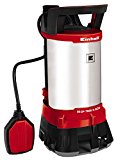Pond vacuum cleaner purchasing advice: how to choose the right product
- What You Need to Know
- Silt builds up over time in standing water such as garden ponds.
- Silt deteriorates water quality if it is not removed.
- A pond silt vacuum removes the silt from the bottom of the pond.
- There are versions with a collection tank and with a 2-chamber system.
Why pond sludge becomes a problem
A garden pond is beautiful to look at and provides a habitat for many different animals and plants. However, it also requires a lot of maintenance. Like many standing waters, it is susceptible to deterioration in water quality. Over time, dead biomaterial accumulates on the bottom, the pond sludge. Too much pond silt can lead to various problems. In the worst case, the ecosystem in the garden pond dies.
A layer of sludge on the bottom of the pond is first of all completely natural. It is an important habitat for many animals. It is also the home and breeding ground of countless microorganisms. In a body of water in which there is an ecological balance, no more mud accumulates than is decomposed by the microorganisms. In nature, small, shallow and stagnant bodies of water silting up all by themselves.
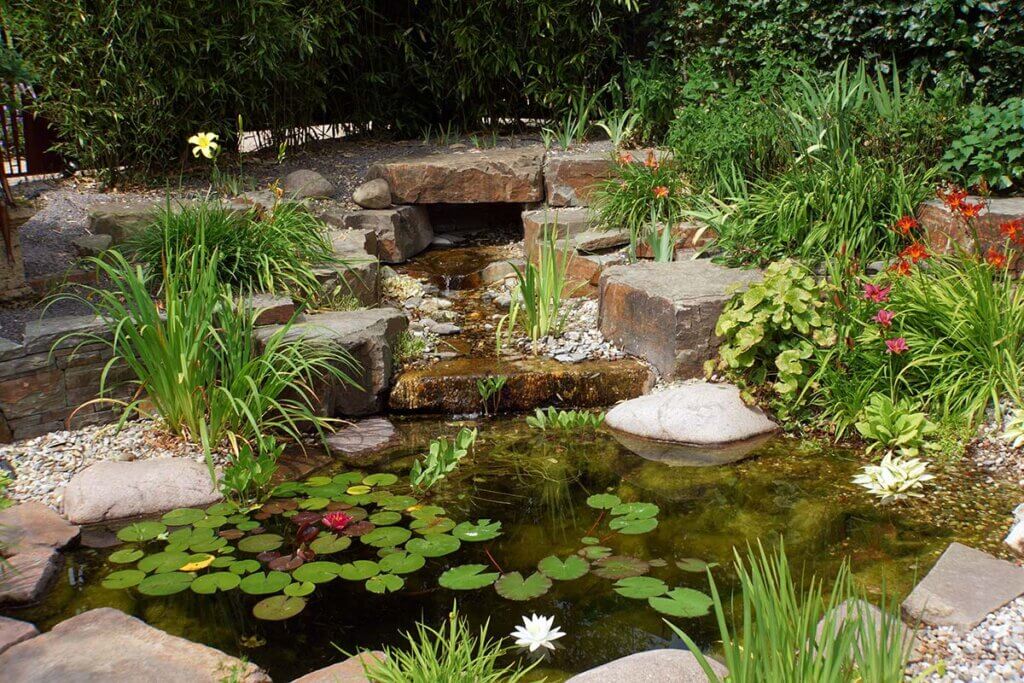
Problems arise when too much organic matter is added to the pond, for example through fish food or leaves falling into it. The excreta of the pond inhabitants also contribute to the accumulation of organic material. The microorganisms extract oxygen from the water to break down the sludge. At some point, the oxygen content of the pond is so low that they stop their activity. Then the sludge begins to rot and secrete toxic gases. The pond is in danger of becoming a dead body of water.
Pond sludge can also cause an algal bloom. When the nutrient-rich sludge is stirred up by pond work or aquatic life, the nutrients are distributed back into the water cycle. The result is a strong growth of algae. When they die, they also fall to the bottom again. Due to the decomposition processes, the oxygen content in the pond drops so much in a short time that it threatens to topple over.
Rising gas bubbles, a foul smell and a strong appearance of algae are acute signs that pond renovation is necessary. To save the small biotope, the sludge must be removed. The pond sludge vacuum cleaner is a device specially designed for this purpose.
Check the water quality of the pond
Water quality problems can be detected early on with a water test. The easiest way to do this is with test strips that change colour. A pH meter provides more precise information. The pH value in the pond should be between 7.5 and 8.4. Values above 8.2 already favour an algae bloom.
What is a pond sludge vacuum cleaner?
A pond sludge hoover looks similar to an industrial hoover. Inside it is a centrifugal pump that sucks up mud and water. The device is designed in such a way that the motor cannot come into contact with moisture. The dirt particles that are sucked up end up in a collection container. Depending on the design of the pond sludge vacuum cleaner, the sludge must be disposed of manually or it is discharged via a hose, for example as fertiliser into a bed. The water that is also sucked up has a high nutrient content and can benefit plants.
Most pond scum vacuum cleaners are not designed to return the absorbed water back into the pond. This requires a large filter bag, which usually has to be purchased separately. The cleaned water then swells through the bag back into the pond. Unfiltered water should not be returned to the pond as it encourages algae growth.
Pond sludge vacuum cleaner with collection container
With the simplest and at the same time cheapest pond sludge vacuum cleaners, the moist sludge is sucked into a collection container that has to be emptied regularly. This is not only associated with interruptions to the work, but also the transport can be very laborious, as wet sludge has a high weight. Due to the amount of work involved, such a pond sludge vacuum cleaner is only suitable for smaller water bodies of up to 1,000 litres.
Pond sludge vacuum cleaner with 2-chamber system
A sludge vacuum cleaner with a 2-chamber system has two containers that are filled and emptied alternately. This means that it can be operated without interruptions. The sludge produced is drained off directly via a drain hose, for example into a nearby bed, a compost heap or into the sewage system. The sucked-up water can be returned cleaned by laying the drain hose in a filter bag. The pond sludge vacuum cleaner with two chambers is more expensive than a simple model with a collection container because of its technical equipment. If you have a larger pond in your garden, you should definitely consider this investment, as the device makes the work much easier.
What to look for when buying a pond sludge vacuum cleaner
Whether a pond scum vacuum successfully removes the dirt from the bottom of the pond depends on the suction depth and the suction power. The length of the hose must be sufficient for the depth of the pond. Various nozzles and attachments make it easier to work with the sludge vacuum cleaner.
Suction depth
The hose of the pond mud vacuum cleaner must be long enough to reach all places at the bottom of the pond. As a rule, the hose supplied is between four and five metres long. It should be noted that the length of the hose is not identical to the suction depth. The suction depth specified by the manufacturer is the maximum depth from which sludge can be pumped. Commercially available units often reach a suction depth of about 2.5, rarely 3.0 metres.
To find out whether the specified suction depth is sufficient for your pond, measure the depth. Most ornamental ponds are shallow and not even one metre deep. A garden pond that is to provide a home for fish must be at least 1.2, better still 1.5 metres deep. A depth of two metres is often recommended for swimming ponds. Most pond mud vacuum cleaners therefore have a sufficient suction depth.
Suction power
The higher the suction power of a pond scum vacuum cleaner, the faster it will do its job. Most sludge vacuum cleaners have an output of 1,200 to 2,000 watts. A powerful vacuum cleaner is recommended for a large pond with a correspondingly large amount of sludge. For smaller, not too deep ponds, an average device is sufficient.
The shorter the suction hose, the better the suction power. To efficiently suck up mud with a long hose, you need a powerful mud vacuum cleaner.
Size of the tank
The amount of work required for pond cleaning is directly related to the size of the collection tank. The capacity of most devices is between 25 and 35 litres. The larger the tank, the less often it has to be emptied. However, everyone must decide for themselves whether they would rather carry 35 than 25 litres. It may well make sense not to fill the container completely.
This criterion does not apply to pond sludge vacuum cleaners with a 2-chamber system, as the sludge is discharged directly via the discharge hose.
Nozzles and attachments
Similar to the hoover, there are also various nozzles for special applications or pond zones for the pond sludge vacuum cleaner. They make the work much easier. The universal brush, which is usually included in the scope of delivery, is ideal for use on pond bottoms without obstacles. The crevice nozzle is used – as with the hoover – to clean joints and angles. The narrow suction lance fits between plants. For stubborn dirt, use the brush.
A mulm funnel is recommended for cleaning gravel surfaces. This attachment prevents pebbles from being sucked up by increasing the distance between the suction opening and the gravel bottom. The pebbles are lifted by the strong suction force, but then fall back to the bottom. Only the mud is sucked up.
How much does a pond mud vacuum cost?
Inexpensive pond sludge vacuum cleaners with a collection container cost around 70 euros. Sometimes you can find even cheaper devices on the market that only have a collection bag instead of a container. Sludge can easily escape from the bag, which makes the work more difficult. Models with a 2-chamber system are available from around 100 euros. In the price range around 150 euros, there are many solid devices. Professional models cost 300 euros and more.
Hints for use
Using a pond scum vacuum cleaner is not difficult, but its use involves preparation and follow-up. The ideal time for cleaning is after the first warm days in spring. The pond must be prepared, for example by fishing out coarse impurities. After the procedure, the extracted sludge must be disposed of.
Using the mud vacuum
The use of a pond mud vacuum cleaner is quite simple: it is gently and evenly moved over the pond bottom like a hoover. Ideally, the cleaning should be done in a pond whose water has been drained beforehand. However, this is not always feasible. To reach all spots, you can stand in the water wearing fishing trousers or place a ladder like a footbridge over the pond.
The pond mud vacuum cleaner should not be placed too high above the water surface. Many devices lose a lot of suction power if they are placed at a higher level. A location that is one metre above the water surface can reduce the suction power by half. Make sure that the mud vacuum is secure and level. It should never be located directly on the edge of the pond. Otherwise you run the risk of accidentally pulling the device into the pond.
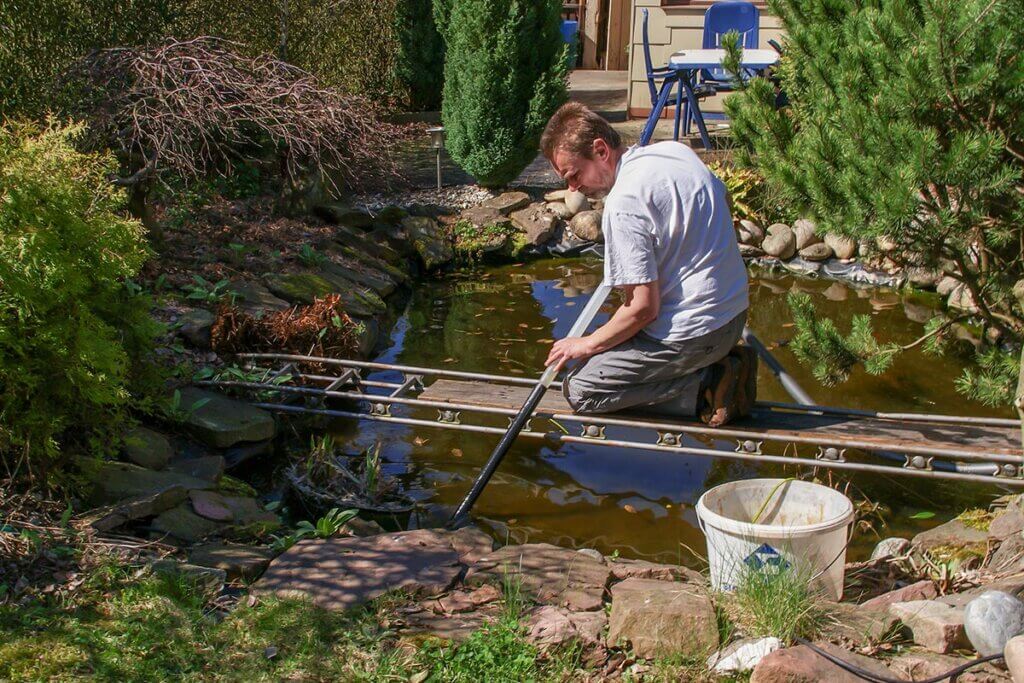
Before you start vacuuming, it is advisable to remove coarse debris with a landing net. Then, when vacuuming the mud, proceed slowly and with caution. Quick movements do not give the unit enough time to suck up the mud. In addition, dirt is stirred up. This disturbs pond inhabitants and releases bound nutrients that they actually want to remove from the water. Also be careful not to damage the pond liner and the fleece underneath with the vacuum cleaner.
How often should the pond be cleaned?
Cleaning the pond in spring is a must, another one in autumn is recommended. Over the winter many sediments sink to the bottom. When temperatures regularly exceed ten degrees Celsius again, rotting processes and algae growth begin. Vacuuming in spring makes the pond fit for summer. If the pond is cleaned again in autumn, less sludge will accumulate over the winter.
What about the pond inhabitants?
Vacuuming the pond mud is a direct intervention in the habitat of the aquatic inhabitants. Even if you have not put fish in the pond, amphibians, insects and other creatures may still be there. For this reason, caution is advised. Use a flat nozzle to avoid sucking up animals.
If you want to be absolutely sure, remove the fish from the pond. A landing net is best for this, as it has a large surface area and the risk of injuring the animals with it is low. A large bucket or barrel is suitable for housing the fish in the meantime. The container should be placed in a shady place and covered with an air-permeable material to prevent the fish from jumping out.
Where to put the extracted sludge?
Pond sludge that has not yet started to rot is not waste. It consists of decomposed biomass and is full of nutrients. This makes it an ideal, natural fertiliser. The sludge can be added directly to beds or compost as fertiliser. However, be careful not to overfertilise the plants. The full dose of nutrients can sometimes be harmful.
Rotten sludge should be disposed of. Even if large quantities accumulate, there is often no use for it. Like algae, pond sludge can be disposed of with residual waste or organic waste. It may be possible to take the sludge to a municipal composting facility. Flushing the sludge diluted with water into the sewage system is not always permitted. Make sure you find out whether you are allowed to dispose of it in this way. Otherwise you could be fined.
How can the sludge be reduced?
As soon as the sludge layer on the pond bottom has reached a certain thickness, the use of a pond sludge vacuum cleaner is unavoidable. Simple measures will help to reduce sludge formation in the future.
One extremely effective measure is to stretch a leaf net over the pond in autumn. It prevents wilted leaves from falling into the pond, sinking to the bottom and rotting there. If there are already leaves in the pond, you should remove them with a scraper. The scraper is also the ideal tool for fishing off algae. Removing the algae reduces the nutrient content in the water.
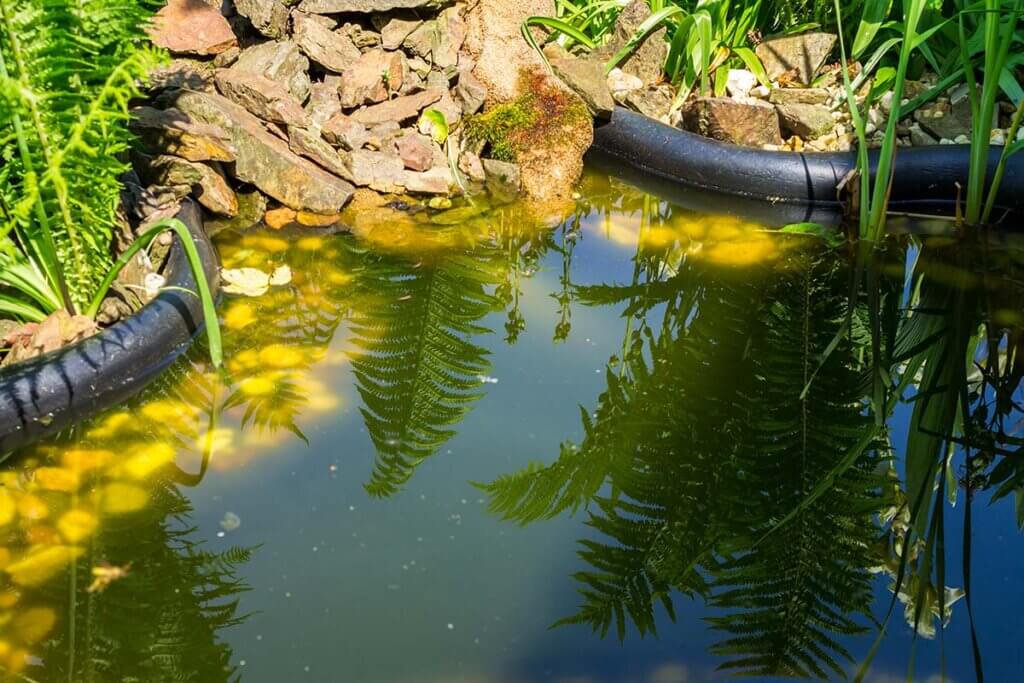
Aquatic plants make an important contribution to the ecological balance in the garden pond. Since they also need nutrients to grow, they compete directly with algae for food. By regularly cutting back the plants, their growth can be additionally stimulated. Water plants that curb algae growth are, for example, pennywort, swan flower, water lily and marsh iris.
To reduce an already existing layer of sludge, there are special pond sludge removers. These consist of a mixture of bacteria and active oxygen. At an early stage of sludge formation, such agents achieve good results. However, the nutrients bound in the sludge are not really removed from the pond, but broken down into a water-soluble form.
Fig. 1: © etfoto / stock.adobe.com | Fig. 2: © apcefoto / stock.adobe.com | Fig. 3: © Animaflora PicsStock / stock.adobe.com

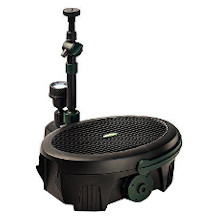
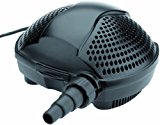
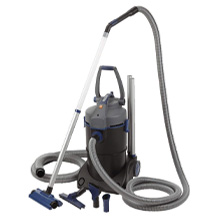
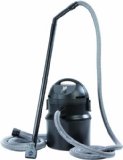
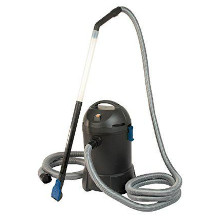
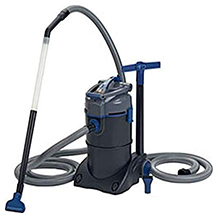
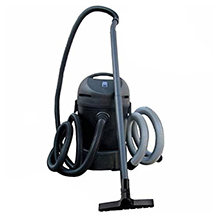

 1,535 reviews
1,535 reviews

